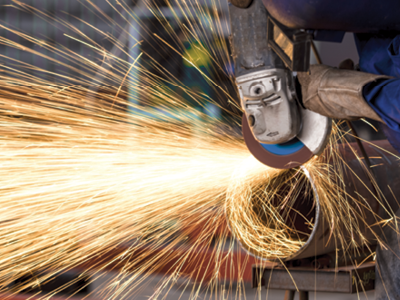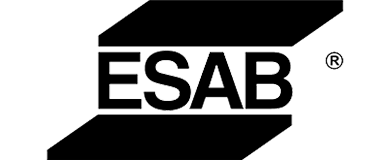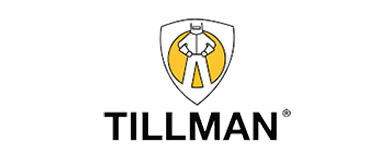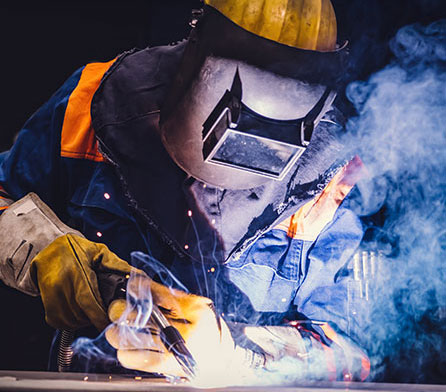Choosing a Cutting Wheel: What You Should Know for Selecting the Right Tool for the Job
Failing to select the right wheel for a tube or pipe welding job can result in using more filler metals – often the most expensive consumable in the operation – to make a quality weld. The wrong wheel can even lead to rework. Choosing a wheel diameter that will cut straight through the tube or pipe’s diameter to produce the most even cut line and weld seam can save you on rework down the line.
Linde offers several different cutting wheels options for varying applications. Each wheel has its unique characteristics that allow it to perform well in different situations. To help get you started, let’s take a look at some introductory information about cutting wheels before selecting one for your job.
Types of Cutting Wheels

There are two popular configurations of cutting wheels:
- Type 1: This is a flat abrasive wheel that allows a maximum work angle of 90 degrees. Though their straight profile and the way they mount close to the guard can reduce visibility for the operator, type 1 cutting wheels are exceptionally useful for grinding with die grinders on small parts. They can also be useful with angle grinders for difficult product configurations. Thin Type 1 wheels are used for cutting with many types of saws and grinders.
- Type 27: This design features a depressed center that allows for a flatter work angle, a better visibility of the work and the ability to flush cut. Type 27 abrasive wheels are designed for right angle grinders.
Cutting Wheel Materials
The grains within the abrasive of a cutting wheel are the particles that perform the cutting. Grains may come in several types. Common types of grains for cutting wheels include ceramic alumina, zirconia alumina, aluminum oxide and silicon carbide.
- Ceramic alumina: Ceramic alumina performs well on steel, stainless steel, and other hard-to-cut metals, including INCONELS™, high nickel alloys, titanium and armored steel. When used and maintained properly, it offers a superior lifespan and cut and tends to cut cooler than other grains, reducing heat discoloration.
- Zirconia alumina: Zirconia alumina provides superior cutting for steel, structural steel, iron and other metals, and it is ideal for rail cutting and other heavy-duty applications. It offers a fast cut and a long life and holds up under extreme pressure.
- Aluminum oxide: Aluminum oxide is one of the most common abrasive grains. It provides a fast initial cut rate and consistent performance for steel and other metals.
- Silicon carbide: Silicon carbide is a hard grain that produces sharp and fast cutting. However, it is also friable, meaning it is not as tough as other grains.
Cutting Wheel Thickness
The right wheel thickness often depends on the precision and accuracy necessary for the cut. For a highly precise cut, a thinner wheel can perform with greater accuracy and precision. Ultra-thin cut-off wheels are 0.04” and 0.045” thick. They cut more quickly, generate less heat and remove less material with each cut. However, a disadvantage is that they tend not to last as long as thicker wheels under identical conditions. In applications where longevity is more critical than precision, a thicker wheel may be more suitable.
Linde Knows Welding
We understand how important the right tools are in preparing and finishing a welding job. To make sure you have everything you need, we complement our welding portfolio with a comprehensive range of tools and abrasives. Whether mild steel, stainless steel, aluminum or exotic alloys, Linde has the right products for your application.





























